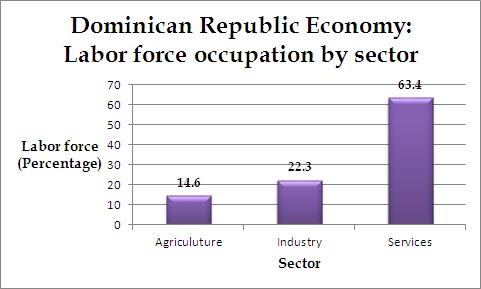New Crops: While some traditional crops are no longer market competitive, many crops are viable for export. Competitive crops include: coffee, organic coffee, sugar, banana, organic banana, avocado, pineapple, Chinese vegetable varieties, frozen vegetables, peppers, coconut, cacao, organic cacao, tobacco, plantain, mango, orange, and lemon. By switching to more lucrative crops, farmers can tap into the global market and earn more money for their yields.
Certification: Although product certifications require fees, documentation, and high quality standards, they can dramatically increase the price per unit that is paid to farmers. Such certifications include organic certifications for both the US and Europe, Fair Trade, GAP, and GlobalGAP.
Post-Harvest and Value-Added: The quality of the product at the time of sale is clearly one of the most important factors in the price. Farmers are learning to increase the value of their crops by growing higher quality products, improving their products through processing, and assuring that the quality of the products deteriorates as little as possible between harvest and market. Such practices vary widely from crop to crop. For example, in coffee production, fruits picked when red are higher quality than those picked green, so farmers can increase their incomes through more selective harvesting practices. In cacao, farmers can raise the sale price by fermenting the seeds before selling them. In fruit production, farmers can guarantee the freshness of their products by arranging more efficient shipping schedules or investing in refrigeration. Farmers may also receive a higher price for more processed goods, like jam, as opposed to raw agricultural products.
Clusters and Cooperatives: Undertakings such as product certification and streamlining trade lines can be difficult for an individual small farmer but much more feasible for groups. A cooperative is a group of farmers who grow the same crops and work together for the advancement of the group. For example, farmers who want to sell organic products to Europe may apply for collective certification and split the cost of the certification. A cluster is a network of people and businesses who work in different parts of the supply chain for the same product including agricultural supply companies, farmers, transporters, vendors, and buyers. Improving relations and efficiency within a cluster is mutually beneficial for all members.
Greenhouses: Dominicans first started using greenhouses for flower production 23 years ago. Sixteen years ago, greenhouse production branched into vegetable production as well. In 2001, the Dominican Ministry of Agriculture launched a program to promote greenhouse production in the DR. Greenhouse production offers several environmental and economic benefits. The contained environment allows for the more efficient use of water and agrochemicals. Greenhouse production also protects land that might otherwise be eroded by conventional farming. Greenhouses create a longer growing season, are more productive per unit area, and allow for increased quality control, which all earn higher prices for farmers.
Agroforestry: One way to control erosion and promote biodiversity is by incorporating trees into agricultural production. A good example of this technique is shade-grown coffee. Coffee is produced on small trees, which can be grown under a canopy of larger trees. In fact the quality of the product is optimal when it is grown in 50% shade conditions, and this higher quality coffee earns a higher price for farmers. This agricultural system is also beneficial for the environment. The coffee can be grown with a wide variety of wild and agricultural plants including banana, plantain, and citrus. Such a variety increases biodiversity and may provide farmers with secondary crops for trade or personal consumption. The presence of strong roots year round prevents erosion, and the higher market price gives landowners an alternative to logging their property or growing less environmentally friendly crops.
Ecotourism: Tourism is also a promising way to boost the economy of rural areas. Visitors can enjoy natural areas, peaceful farms, traditional food, and the joys of simple living while providing rural communities with a secondary source of income. Income from community-based ecotourism can then be reinvested to improve economic viability and quality of life in the community.
Aid Projects: Many opportunities exist between NGO’s, the private sector, foreign governments, and even certain programs of the Dominican government to provide farmers with training, loans, and small grants. Although applying for aid can be difficult for rural residents with limited means of communication, experience in grant writing, or knowledge of whom to ask, aid projects can provide a valuable jumpstart to rural economies.
~Alexa













